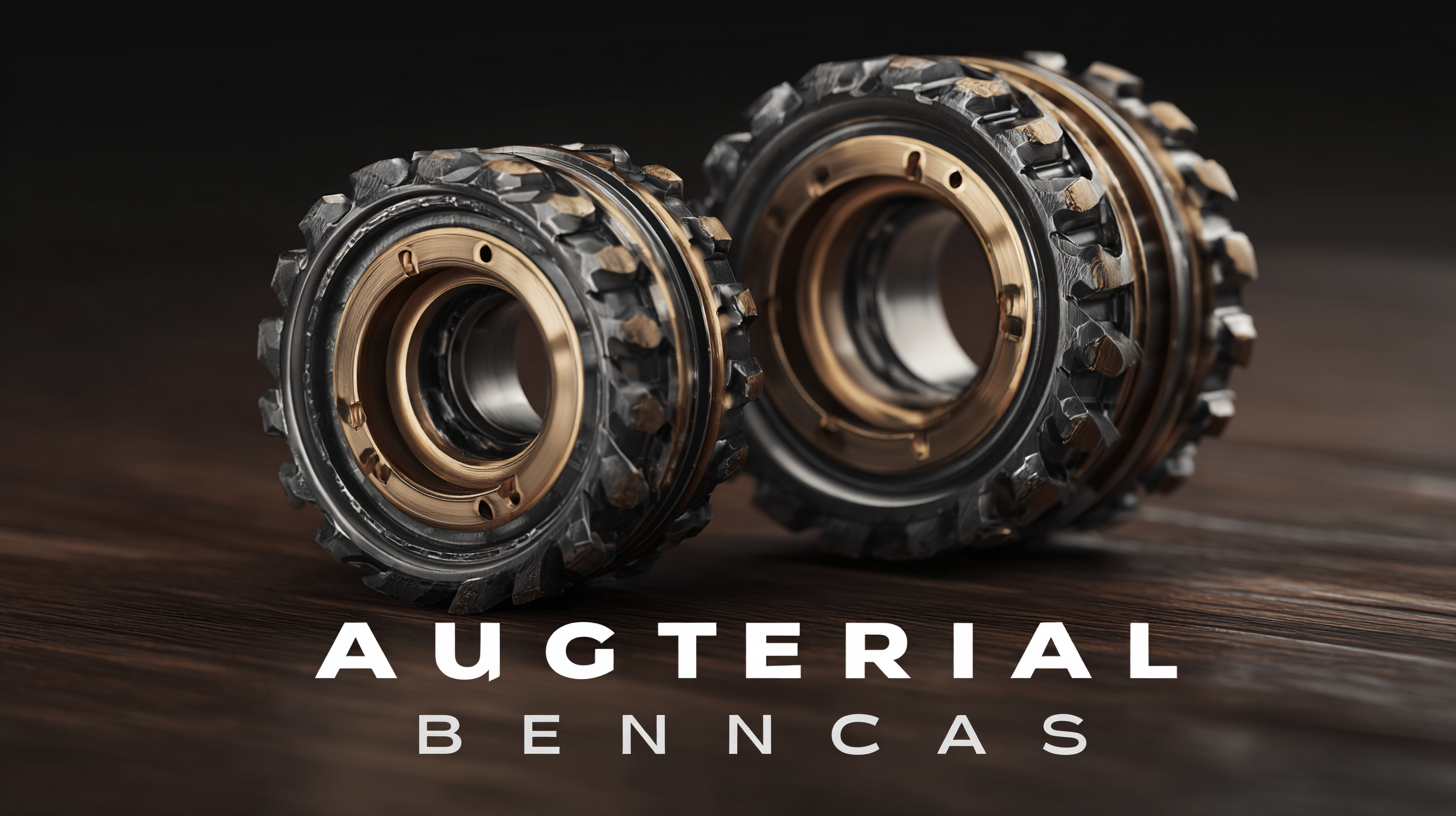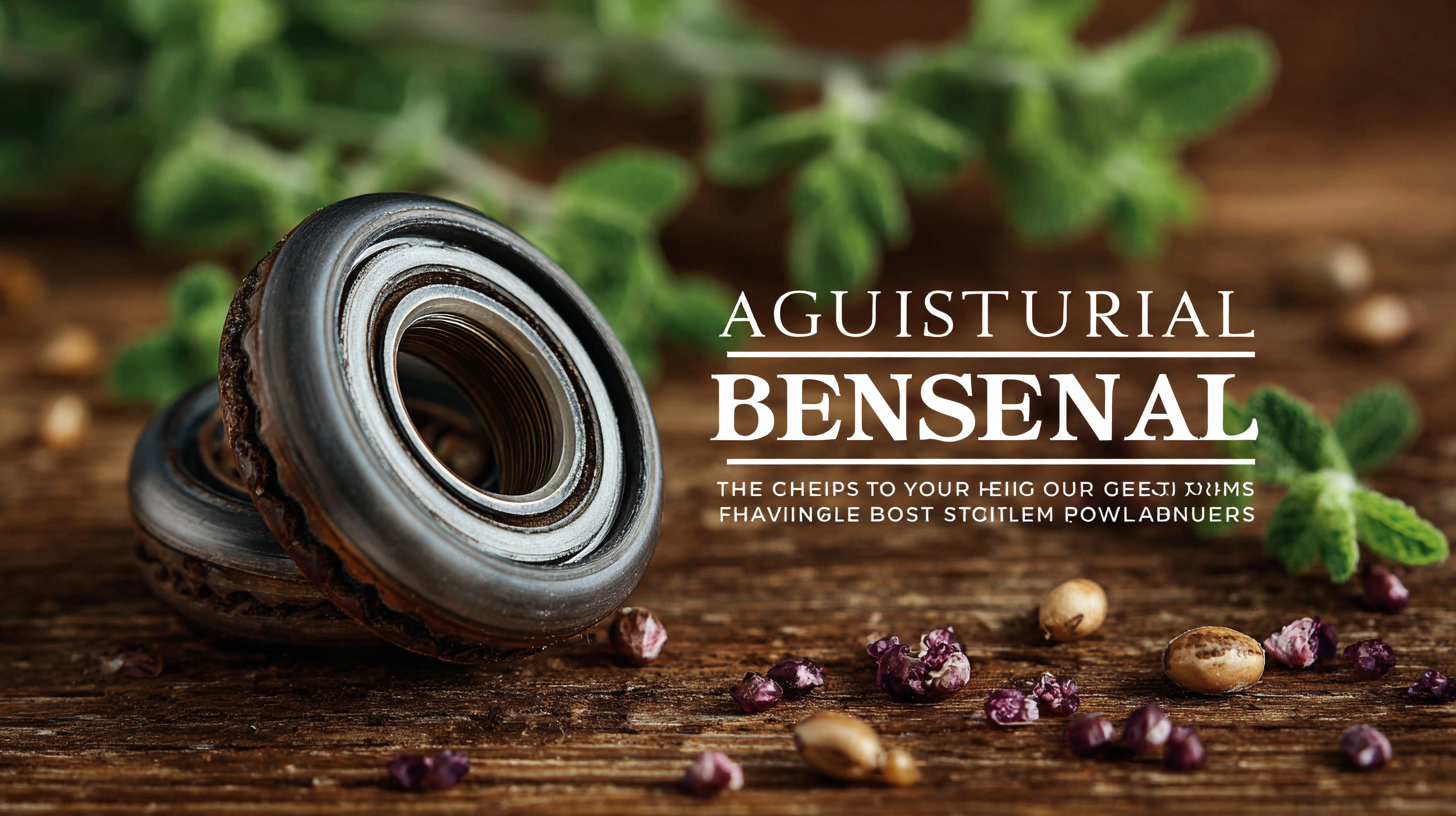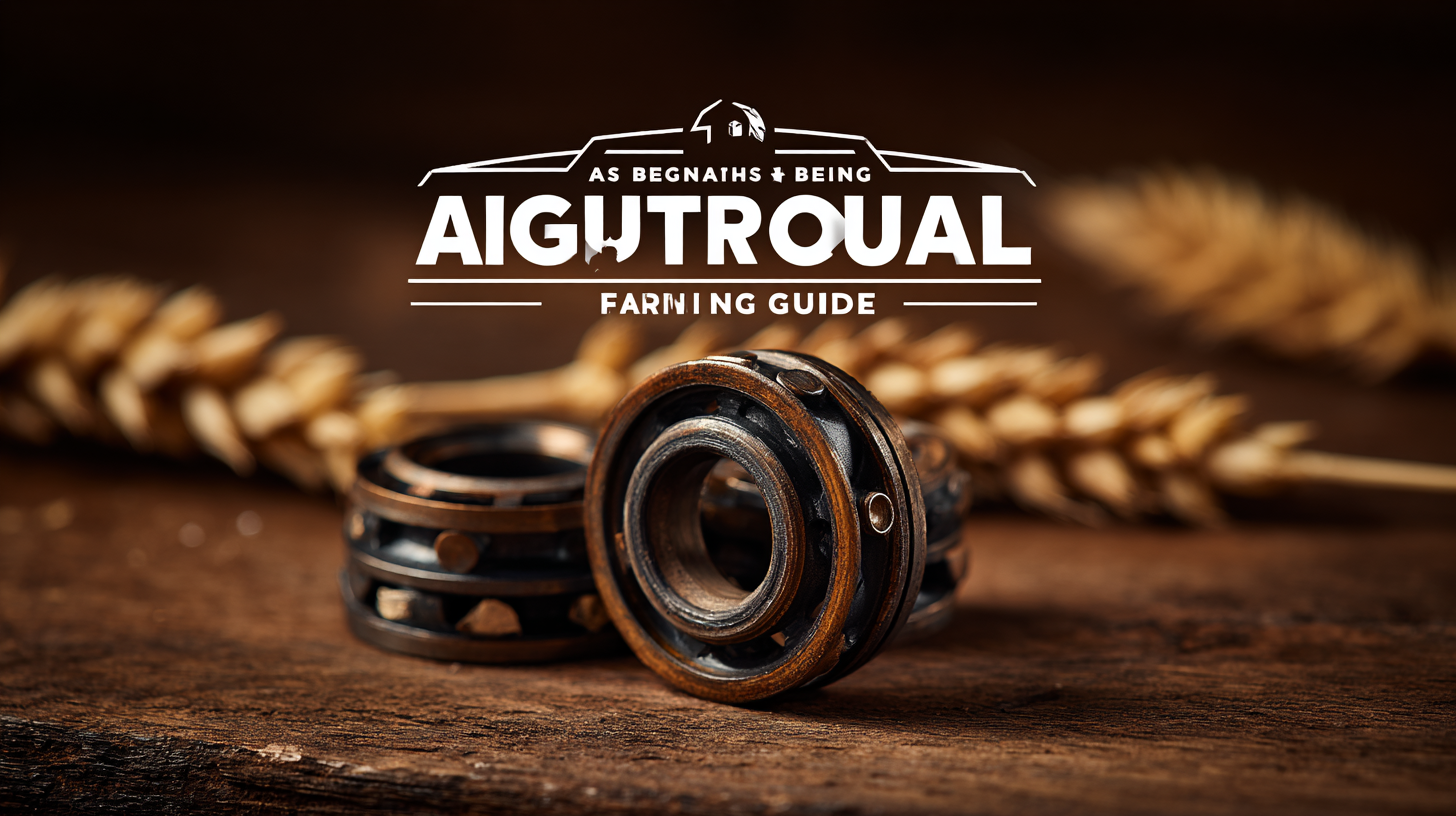Essential Guide to Choosing the Best Agricultural Bearings for Your Farming Needs
In the fast-evolving agricultural sector, the selection of proper equipment is crucial for enhancing productivity and efficiency. One of the pivotal components often overlooked is Agricultural Bearings, which are essential for ensuring smooth operations in various farming machinery.
According to the latest market analysis from Research and Markets, the global agricultural bearings market is projected to reach USD 14 billion by 2025, reflecting a robust growth driven by advancements in farming technology and the increasing need for high-performance machinery.
With the rise in mechanization and the introduction of precision farming techniques, farmers are increasingly recognizing the significance of Agricultural Bearings in minimizing downtime and maximizing yield.
This essential guide provides insights into choosing the best agricultural bearings tailored to meet the unique challenges and demands of modern farming practices, helping to ensure optimal performance and longevity of farming equipment.
Understanding Agricultural Bearings: Types and Functions for Optimal Farm Performance
When it comes to optimizing farm performance, understanding the types and functions of
agricultural bearings is crucial.
Agricultural bearings play a pivotal role in supporting various machinery, ensuring smooth operations
in equipment such as tractors, harvesters, and irrigation systems. They are designed to withstand
the harsh conditions typically encountered in farming, such as exposure to dirt, moisture, and varying
temperatures. Choosing the right type of bearing can significantly affect the efficiency and longevity
of farming equipment, which ultimately contributes to better productivity on the farm.
Incorporating advanced technologies such as IoT-enabled smart sensors
can further enhance agricultural practices. These sensors not only monitor critical factors that
influence crop growth but also integrate with machinery, including those equipped with specialized
bearings. For example, automated systems can detect mechanical issues early, prompting timely
maintenance and preventing unexpected breakdowns. As farmers gear up for future challenges,
understanding the functions of agricultural bearings and embracing smart agricultural technologies
will be essential for maximizing farm efficiency and ensuring sustainable practices.
Key Factors to Consider When Selecting Bearings for Farming Equipment
 When selecting bearings for farming equipment, several key factors must be taken into account to ensure optimal performance and longevity. Firstly, the type of bearing material can significantly impact durability. According to the Agricultural Engineering Journal, bearings made of stainless steel or ceramic can withstand harsh environmental conditions and resist corrosion, resulting in longer service life, particularly in humid agricultural settings.
When selecting bearings for farming equipment, several key factors must be taken into account to ensure optimal performance and longevity. Firstly, the type of bearing material can significantly impact durability. According to the Agricultural Engineering Journal, bearings made of stainless steel or ceramic can withstand harsh environmental conditions and resist corrosion, resulting in longer service life, particularly in humid agricultural settings.
Another crucial consideration is the bearing load capacity. Research from the International Journal of Agricultural Engineering indicates that equipment such as tractors and harvesters typically experience high operational loads. Hence, it's vital to choose bearings that can handle both radial and axial loads effectively. Proper load ratings ensure that bearings can support the weight and stress of agricultural machinery, minimizing wear and the risk of failure during critical farming operations.
Finally, lubrication requirements should not be overlooked. The correct lubricant can enhance bearing performance and prevent premature wear. A study by the American Society of Agricultural and Biological Engineers emphasizes that utilizing the right type of grease or oil, alongside maintaining optimal lubrication intervals, can extend the life of bearings significantly. By focusing on these key factors—material, load capacity, and lubrication—farmers can make informed decisions that improve the efficiency and reliability of their equipment.
Market Trends and Predictions for Agricultural Bearings by 2025
The agricultural bearings market is experiencing a significant upward trajectory, with projections indicating a growth from $501.6 billion in 2025 to an impressive $971 billion by 2032. This translates to a compound annual growth rate (CAGR) of 9.9%, showcasing the increasing demand for reliable and efficient machinery in farming operations. As technological advancements continue to evolve, farmers will need to stay informed about the latest innovations in agricultural bearings to enhance productivity and reduce downtime.
In addition to the anticipated market growth, the refinement of industry standards is playing a crucial role in the evolution of agricultural equipment. Improvements in artificial cultivation techniques for key resources, such as the Cordyceps sinensis, are indicative of a broader trend toward innovation in agriculture. These advancements not only aim to optimize the yields of essential crops but also highlight the importance of using high-quality bearings that can withstand the rigorous demands of fieldwork. As these trends unfold, farmers are encouraged to evaluate their machinery's components and invest in high-performance bearings that meet their specific agricultural needs.

How to Evaluate the Quality and Durability of Agricultural Bearings
When selecting agricultural bearings for your farming equipment, evaluating quality and durability is paramount. The harsh conditions in which these bearings operate demand materials that can withstand extreme temperatures, moisture, and heavy loads. Look for bearings made from high-quality steel that has been treated to resist corrosion and wear. Additionally, consider seals and shields that protect the bearing from dirt and contaminants, which can significantly extend its lifespan.
**Tip:** Always check the manufacturer's specifications and seek bearings with a proven track record in agriculture. Look for third-party certifications or test results that verify their performance under similar conditions to what you face on your farm.
Another crucial factor is the bearing's design and suitability for your specific application. Different types of bearings, such as ball bearings, roller bearings, or tapered bearings, offer unique advantages depending on load requirements and rotational speed. A thorough assessment of your equipment’s needs will lead you to the right choice.
**Tip:** Consult with industry experts or bearing suppliers who can provide insight into the most reliable options for your specific machinery types and conditions, ensuring that you invest in bearings that will perform reliably over time.
Essential Guide to Choosing the Best Agricultural Bearings for Your Farming Needs
This chart represents the evaluation of quality and durability of various types of agricultural bearings based on user feedback. The data reflects the average ratings in terms of performance, resistance to environmental factors, and overall longevity.
Maintenance Tips for Extending the Life of Your Agricultural Bearings
Maintaining agricultural bearings is crucial for ensuring peak performance and longevity in farming operations. Regular inspections are key to identifying signs of wear and tear early. Look for any unusual noises, vibrations, or signs of overheating, as these can indicate that your bearings are under stress. Additionally, ensure that bearings are lubricated properly. Using the correct type and amount of lubricant not only minimizes friction but also helps to protect against moisture and contaminants that can cause rust and corrosion.
Another vital maintenance tip is to keep equipment free from dust and debris. Accumulated dirt can lead to increased wear on bearings, so implementing a regular cleaning routine is essential. After cleaning, make sure to re-inspect bearings to ensure they are in optimal condition. Moreover, considering environmental factors is important; for instance, if your farming operations occur in areas with extreme temperatures or high humidity, selecting bearings designed for those conditions can greatly enhance their lifespan. By following these maintenance practices, you can significantly reduce the likelihood of costly downtime and ensure your agricultural equipment functions smoothly year-round.

Home
Products
Industrial Bearings
Deep Groove Ball Bearings
Self-Aligning Ball Bearings
Angular Contact Ball Bearings
Cylindrical Roller Bearings
Taper Roller Bearings
Spherical Roller Bearings
Bearing housing or Accessories
Miniature Bearing
Thrust ball bearing
Radial Spherical Plain Bearing
Pillow Block Bearing
Needle Roller Bearings
Automotive Bearings
Agricultural Bearings
Special Material Bearings
Industry Application
About Us
News
Contact Us




 When selecting bearings for farming equipment, several key factors must be taken into account to ensure optimal performance and longevity. Firstly, the type of bearing material can significantly impact durability. According to the Agricultural Engineering Journal, bearings made of
When selecting bearings for farming equipment, several key factors must be taken into account to ensure optimal performance and longevity. Firstly, the type of bearing material can significantly impact durability. According to the Agricultural Engineering Journal, bearings made of 